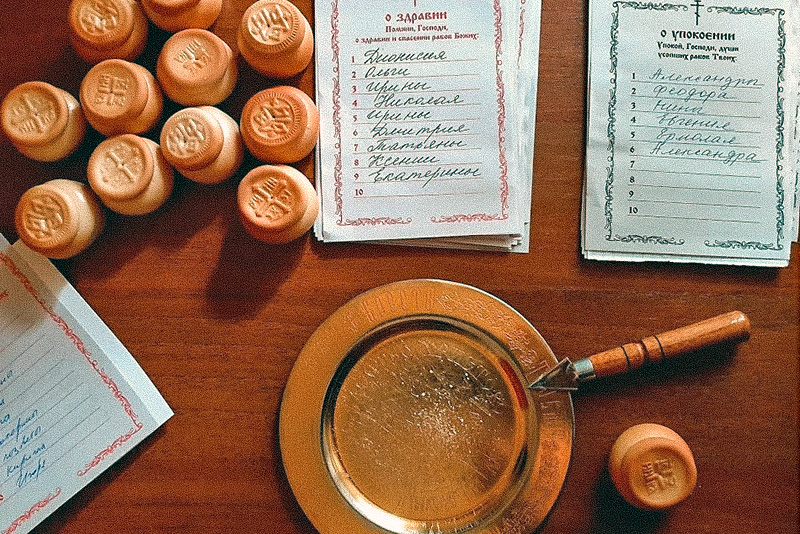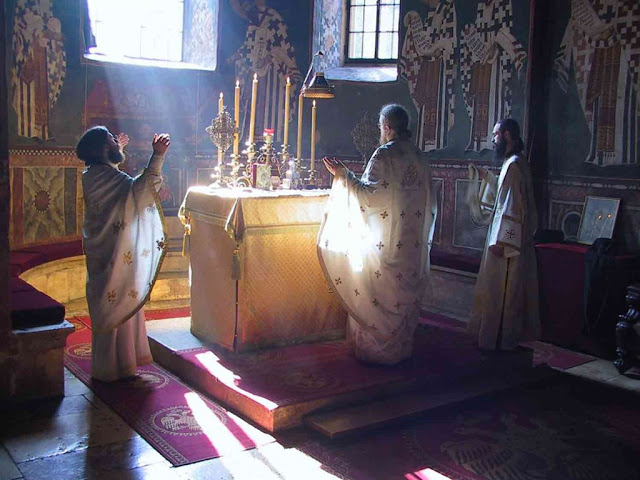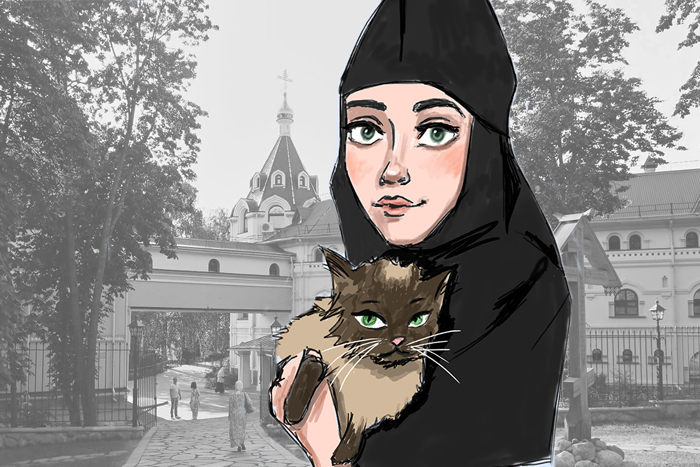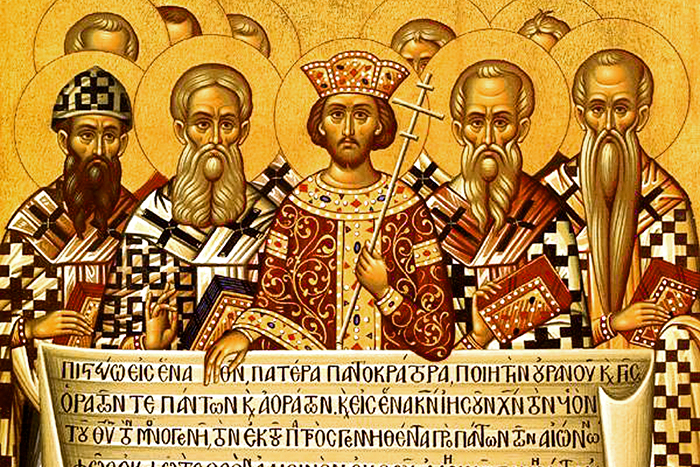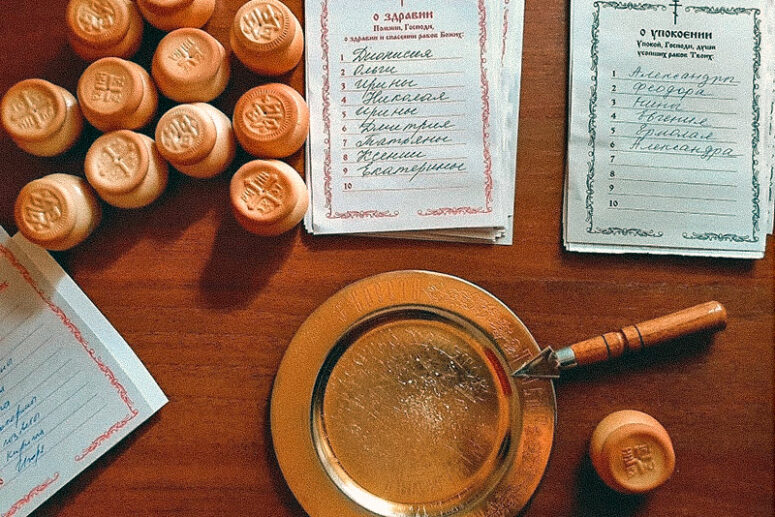
The proskomedia, performed before each Eucharist, is perhaps one of the most symbolic and complex elements of worship from a ritual point of view. As evidenced by the very name of the rite (Greek Προσκομιδή — offering) its main meaning is the act of offering our gifts (bread and wine) to God. The proskomedia has become much more complicated since the first centuries when it consisted simply in bringing the best bread and wine to the Church and placing them on the altar table. Its modern elaborated appearance stems from the East and gradually begins to take shape in the second millennium. The rite of proskomedia has not been unified, which led to some differences existing in it for a considerable time. This article is dedicated to one such difference, remaining to this day between the Greek and the Russian practices, namely the commemoration of the bodiless Hosts.
The Greek Tradition
The rather ancient tradition of commemorating the angels during the proskomedia has long been rooted in the Greek churches. The particles in commemoration of the Archangels Michael and Gabriel (as well as all the Heavenly and Bodiless Powers) are taken from the prosphoron of the Nine Ranks and placed on the diskos to the left of the Lamb. Remembering the “great angelic Leaders Michael and Gabriel and all Heavenly Powers” (Greek service book), the priest then takes out a particle in honor and memory of the honorable Prophet and Baptist John, commemorating the glorious Forerunner not separately, as it happens in Russian practice, but as an honorable member of the entire prophetic host, the last Old Testament prophet and the greatest “among those born of women” (see Matthew 11:11). This appears quite logical, since the prosphoron of the nine ranks is named so to commemorate the nine types of holiness, one of which (the prophetic holiness) is shared by St John the Baptist with other prophets. It is important to note that the nine types of holiness are the earthly projection of the nine angelic orders, which makes it appropriate to include the angelic powers in the proskomedia.
The modern rite of proskomedia arose at the beginning of the second millennium, which was also the time (at least no later than the patriarchal term of Nicholas III of Constantinople (1094-1111)), when the angelic forces began to be commemorated at the prothesis (credence table). The Typicon of the 12-13th centuries, as well as the Diataxis of Patriarch Philotheus I, also prescribes the commemoration of angels at the proskomedia. What is the reason for such a tradition? Truly the Son of God shed His Blood not for the angels, but the people. At the same time, the consequences of Christ’s Sacrifice of the Cross, as well as the very fact of the Incarnation, extend to the whole world, including the Angelic Host (St Maximus the Confessor, Ecumenical Liturgy). Angels are creatures of God and, taking on the created nature in the Incarnation, God the Word sanctifies it.
Saint Simeon of Thessaloniki directly writes (The Wisdom of Our Salvation, 4; 62) that angels should be remembered at the proskomedia, since they participated in the sacrament of the Incarnation, thus uniting with the Christians, who were reborn by water and the Spirit, and constituting one church with us. Desiring to “partake in the mysteries of the Church and striving in the degrees of ascent,” angels are present at the Eucharist and intercede for us before God. In the light of this, the commemoration of angels at the proskomedia emphasizes the cosmic dimension of the Liturgy and the universal significance of the Incarnation, uniting the heavenly and the earthly under the authority of Christ (see Eph. 1:10).

The Russian Tradition
Despite the numerous manuscripts and ancient service books testifying to such a rite, there is no commemoration of angels in modern Russian proskomedia. What are the arguments in favor of the Russian tradition? First of all, it is asserted (Guidelines for the Rural Clergy) that angels are ethereal spirits, and therefore cannot be represented by symbolic material particles, whereas the proskomedia embodies only the human race (n. b., the incorporeality of angels is a rather complex theological question).
The second reason, strongly articulated by Archpriest Sergey Muretov, known for his expertise in liturgics, is that the commemoration of the angels at the proskomedia has a historically accidental origin. In the very beginning of its formation the rite of the proskomedia was based on the already existing litany (O Lord save your people…) during which various communions of saints, including angels, are commemorated. This is proved by the fact that for some time even the Lord’s Cross was commemorated at the proskomedia, which looked unduly even though its remembrance makes perfect sense at the litany. (Archpriest S. Muretov. On the Commemoration of the Heavenly Host at the Proskomedia). While agreeing with this historical argument, it would be appropriate to note that some Slavic churches, besides the communions of saints, commemorated at the proskomedia even the Feasts of the Theotokos, including the Deposition of the venerable Robe (Manuscripts 518 of the Sofia Collection of the Russian National Library).
Finally, the third and most important argument is the statement that the Eucharist introduces us to the Sacrifice of Calvary for the atonement of sins. Being sinless creatures, angels do not need redemption, which applies exclusively to the descendants of the fallen Adam. After communion, the priest pours the proskomedia particles into the Chalice with the words: “Wash away, O Lord, the sins of those who were remembered here by Your precious Blood and by the prayers of Your saints” (Liturgy of St John Chrysostom). In this event, the inclusion of the angels in the proskomedia is regarded as asserting their dependence on the Redeeming Sacrifice of Christ, which is dogmatically questionable.
Both the Greek and Russian traditions exist in the church on equal terms today, with each containing its own significance and unique beauty, while jointly serving as an example of the golden rule being implemented in the church: “In necessary things unity; in uncertain things liberty; in all things charity.”

